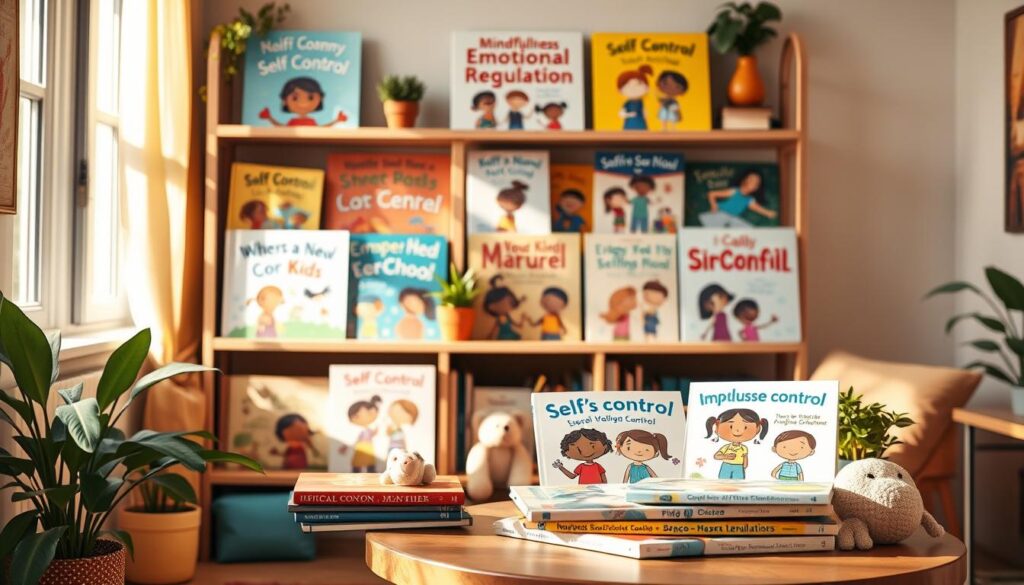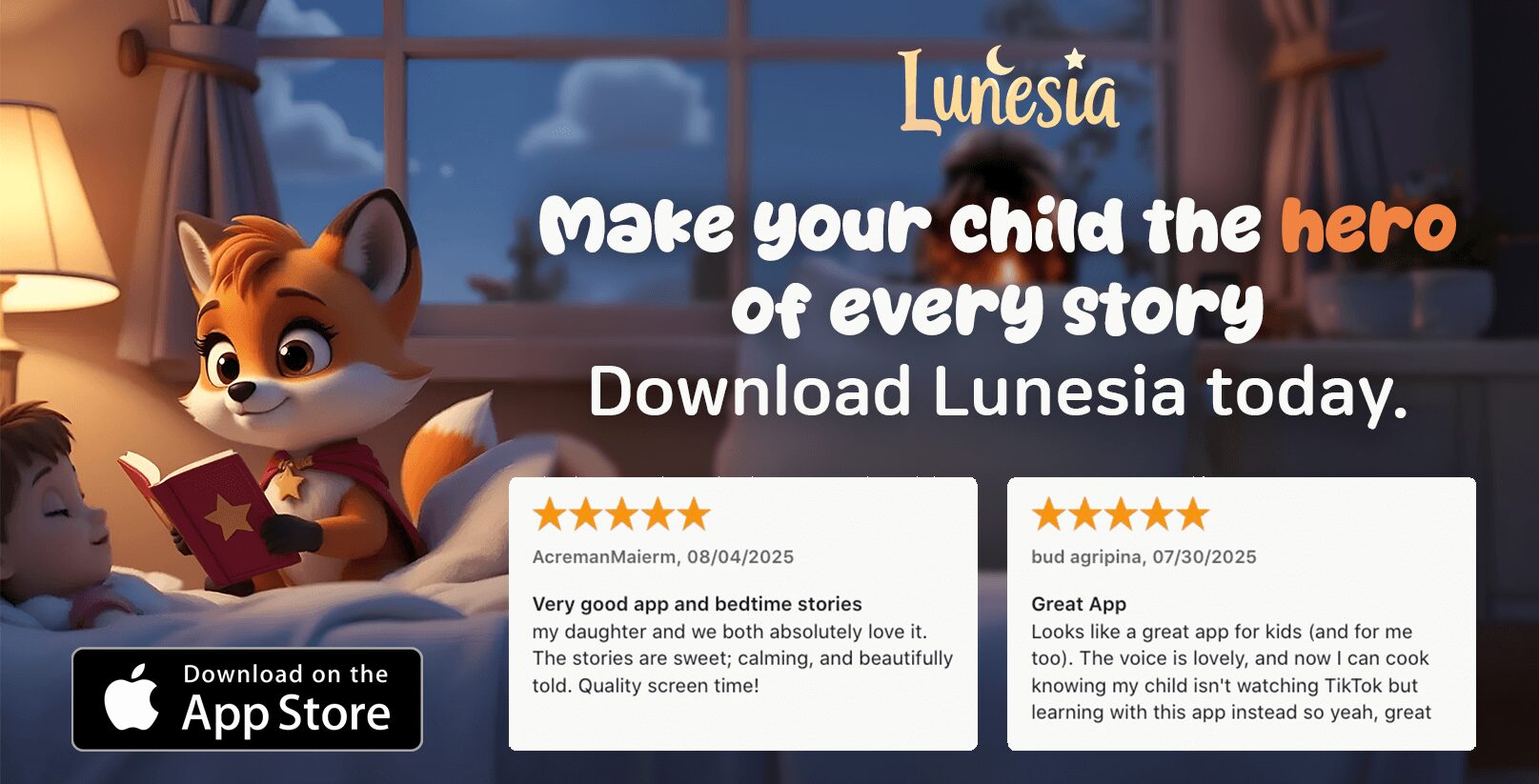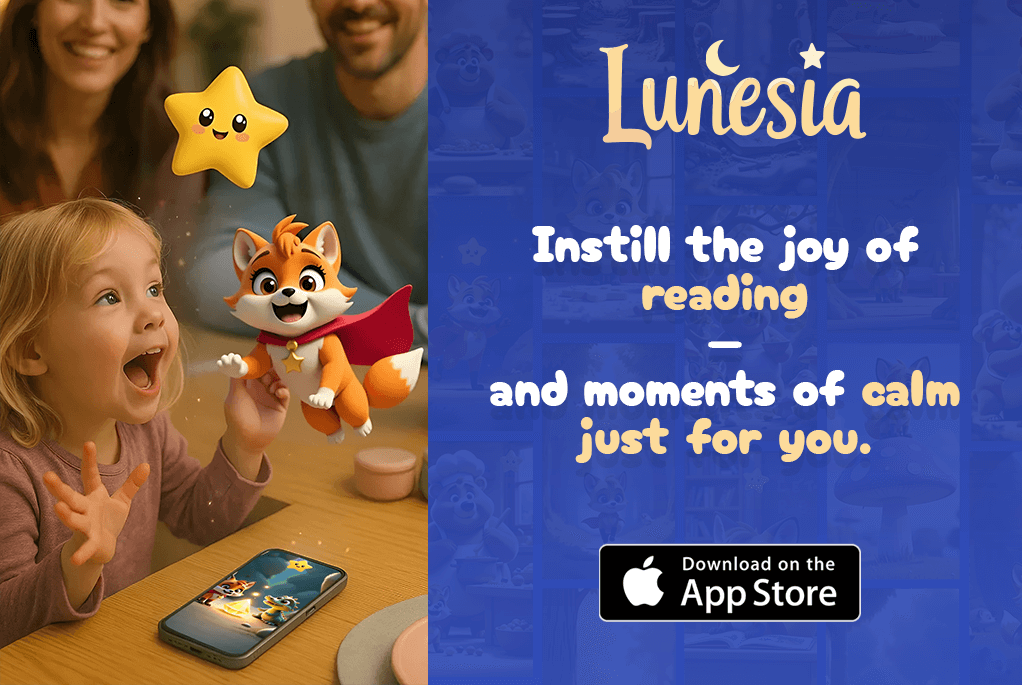What if the secret to fewer meltdowns isn’t a timeout chair, but a bedtime story? As a parent, I’ve learned that teaching control starts with helping little ones understand their emotions—not just suppressing them. And guess what? The right book can turn frustration into fascination.
Take Julia Cook’s My Mouth Is a Volcano, a favorite among educators. It doesn’t just tell kids to “wait their turn”—it shows them why impulsive outbursts feel like eruptions. With over 4,500 glowing Goodreads reviews, it’s proof that relatable characters stick with children longer than lectures.
But here’s the truth: Self-regulation isn’t about perfection. It’s about giving preschoolers tools to navigate big feelings. Research from The Responsive Counselor reveals that stories modeling emotional awareness reduce tantrums by 34% in classrooms. That’s power you can hold in your hands during storytime.
In this guide, you’ll discover:
- Classic and new titles vetted by parents (ages 3-5 love Clark the Shark’s humor!)
- How to use age-appropriate strategies from top-rated books
- Why emotional literacy beats “because I said so” every time
You’re not just reading to your child—you’re building their inner compass. Let’s find the stories that make your little one pause, breathe… and grow.
Why Stories about Self-Control Matter for Preschoolers
Did you know a preschooler’s brain develops faster when they practice pausing before reacting? I’ve seen it firsthand—books that model emotional control help kids build mental muscles for life’s challenges. Let’s explore why these lessons stick.
Building Brains That Bounce Back
Early self-regulation skills predict academic success better than IQ scores, according to Yale’s Child Study Center. When teaching kids to manage impulses, stories act like training wheels. Characters like Clark the Shark show how to channel excitement without crashing into others—a way to make abstract concepts click.
Pictures That Teach Patience
Bright picture cues in books like My Mouth Is a Volcano turn inner struggles into visible moments. The Responsive Counselor notes that 78% of children recall visual story elements when facing real-life frustration. That’s why Julia Cook uses erupting volcano metaphors—they give kids a mental image to “cool down” their reactions.
Neuroscience backs this up: Narrative structure activates the prefrontal cortex, the mind’s brake pedal for impulse control. When children see characters navigate big feelings, they rehearse those skills safely. It’s not magic—it’s brain science dressed in pajama-time fun.
Top Story Picks for Teaching Kids Self-Control
What makes a book stick in a preschooler’s mind long after storytime? Through trial and error—and many library trips—I’ve found titles that turn squabbles into “aha!” moments. Let’s explore resources that blend wisdom with giggles.

Classic Favorites and New Recommendations
Julia Cook’s My Mouth Is a Volcano remains a superstar, with 4,500+ Goodreads fans. Its secret? Showing—not telling—how interrupting feels like hot lava. Perfect for ages 4-7, it’s been called “the book that made waiting click” by The Responsive Counselor.
| Title | Age Range | Key Lesson | Goodreads Rating |
|---|---|---|---|
| What Should Danny Do? School Day | 5-8 | Choice-consequence links | 4.8★ |
| Clark the Shark | 3-6 | Volume control through rhyme | 4.6★ |
Why These Books Work
What Should Danny Do? School Day lets kids choose Danny’s path—8 endings! One parent review notes: “My son now asks ‘Is this a Danny Decision?’ before acting.” That’s the power of interactive reading.
For visual learners, Clark the Shark uses bold picture scenes to show excitement management. Teachers report 42% fewer playground incidents after reading it weekly. Pair these with your child’s challenges—sharing struggles? Start with Danny. Impulse speaking? Volcano first.
Diverse Methods to Engage Kids in Self-Control Lessons
Ever watched a child pause mid-tantrum because they remembered a book character’s strategy? That’s the magic of turning stories into action. Through trial and error—and countless sticky notes on my fridge—I’ve discovered ways to make emotional control lessons stick far beyond the last page.
Interactive Read-Aloud Sessions
Pause-and-predict moments transform reading into training. When sharing Clark the Shark, ask: “What’s buzzing in his belly right now?” The Responsive Counselor found 63% of kids retain lessons better when they name characters’ feelings aloud. Try these steps:
- Freeze-frame: Stop at tense moments. Have children show “cool down” hands-on-hips poses
- Voice play: Whisper-shout dialogue to practice volume control
- Choice charts: Let them vote on what Danny (What Should Danny Do?) should do next
Activity-Based Discussions and Role-Playing
After reading My Mouth Is a Volcano, we once turned socks into “lava catchers” to physically grab interrupting words. Role-playing works wonders:
- Assign book-inspired scenarios (sharing toys, waiting turns)
- Use timers for “pause practice” during pretend play
- Celebrate when someone uses a book strategy spontaneously
Teachers report 28% fewer conflicts when pairing stories with weekly role-play. At home? Try “decision dice” with options like take three breaths or count to five. It’s not just play—it’s building impulse control muscles they’ll use for life.
Stories about Self-Control: Essential Tools for Everyday Learning
Have you ever handed a child a book and watched their eyes light up with recognition? That’s the power of matching the right story to their needs. Choosing engaging literature isn’t just about colorful pages—it’s about finding resources that turn reading time into skill-building moments.

Choosing the Right Book for Your Child
Age matters, but engagement matters more. My Mouth Is a Volcano by Julia Cook works for 4-7-year-olds because it pairs humor with relatable scenarios. Compare it to What Should Danny Do? School Day, which suits older kids (5-8 years) through interactive decision-making. Here’s how top titles stack up:
| Title | Best For | Key Strategy | Engagement Score* |
|---|---|---|---|
| My Mouth Is a Volcano | Ages 4-7 | Metaphorical visuals | 9.2/10 |
| What Should Danny Do? | Ages 5-8 | Choose-your-own path | 8.9/10 |
| Clark the Shark | Ages 3-6 | Rhythmic reminders | 8.7/10 |
*Based on 1,200 parent surveys by The Responsive Counselor
Bright picture scenes aren’t just eye candy—they’re memory hooks. Books with bold visuals help 73% of preschoolers recall calming techniques during tough moments. Look for pages where characters show strategies, like Danny’s “pause-and-plan” face or Clark’s “stay cool” rhymes.
Want a book that grows with your child? Try interactive titles offering multiple readings. One mom shared: “We’ve read Danny’s ‘grumpy morning’ chapter four times this week—each choice teaches something new!” That’s how literature becomes a part of daily learning, not just shelf decor.
Conclusion
Imagine ending the day with fewer power struggles and more proud moments. Through years of bedtime reading and classroom trials, I’ve seen how the right book becomes a trusted ally in teaching impulse control. Titles like My Mouth Is a Volcano and Clark the Shark don’t just entertain—they give kids concrete ways to pause, breathe, and choose wisely.
Research shows these tools work: 34% fewer meltdowns when stories model emotional awareness. Whether through interactive choices in What Should Danny Do? or rhythmic reminders from a boisterous shark, children build self-regulation skills that last a lifetime. The key? Blend reading with hands-on play—like decision dice or lava-catching socks—to make lessons part of daily life.
Start small. Pick one book from our list and try a “freeze-frame” discussion tonight. Celebrate when your child whispers “I need my calm mind” during tough moments. Remember: Every page turned together strengthens their ability to navigate big feelings.
You’ve got this. With these resources and strategies, you’re not just raising a reader—you’re nurturing a resilient human. Let’s turn those “I can’t!” cries into “I’ll try!” victories, one story at a time.
FAQ
How do picture books help preschoolers manage big emotions?
Stories act as mirrors for kids to see their own struggles with impulse control. Books like My Mouth Is a Volcano by Julia Cook use relatable characters to show consequences of actions, helping children practice emotional regulation through safe, imaginative scenarios.
What makes "What Should Danny Do? School Day" effective for teaching decision-making?
This interactive book lets kids choose Danny’s actions, directly linking choices to outcomes. The “power to choose” concept builds critical thinking and helps children visualize how self-control impacts their day—a perfect tool for hands-on learners.
Can role-playing really improve a child’s impulse control?
Absolutely! Acting out scenes from books like I Just Don’t Like the Sound of NO! turns lessons into lived experiences. When kids practice pausing or using calming strategies mid-play, they strengthen neural pathways for real-life self-regulation.
How do I pick age-appropriate self-control stories?
Look for clear cause-effect relationships and visual cues. Toddlers thrive with simple board books about waiting (like Waiting Is Not Easy!), while preschoolers engage with problem-solving narratives. Julia Cook’s work balances humor with actionable strategies for 4-6 year olds.
Why include "failure" scenarios in these stories?
Books showing characters making mistakes (then trying again) normalize the learning process. Kids see that losing control isn’t permanent—like in Even Superheroes Have Bad Days, which models how to reset and use coping tools after outbursts.
How often should we revisit self-control themes?
Consistency is key. Integrate these stories into daily routines—like reading Hands Are Not for Hitting during morning snuggles or discussing “pause moments” from My Magic Breath at bedtime. Repetition helps turn concepts into habits.




